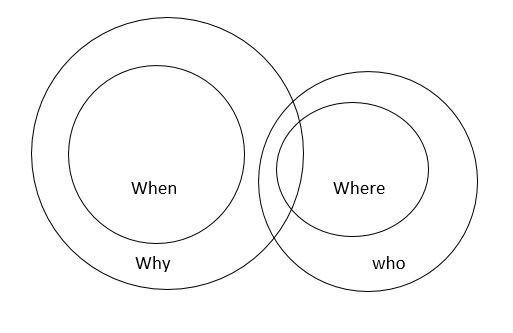Question
Statements:Some whys are where’s. All
when’s are whys. All where’s are who’s. Conclusions:I. Some who’s are whys. II. All where’s are when’s. III. Some where’s are not when’s. In each of the questions below are given three statements followed by three conclusions numbered I, II and III. You have to take the given statements to be true even if they seem to be at variance with commonly known facts. Read all the conclusions and then decide which of given conclusions logically follows from the given statements disregarding commonly known facts.Solution
Some whys are where (I) + All where are who’s (A) = Some whys are who’s.(I) ⇒ conversion ⇒ Some who’s are whys.(I) Hence, conclusion I will follow. A + I = No conclusion. Hence, neither conclusion II nor III follows. However, Conclusion II and III make a complementary pair, hence, either conclusion II or III follows. Alternative method: 
Select the option that can be used as a one-word substitute for the given group of words.
A person who knows everything
Select the option that can be used as a one-word substitute for the given group of words.
A group of three novels or plays, each complete in itself
Everyone I have shown my first two chapters to have given me glowing feedback.
...She was by no means a person who wasted money , but somehow all the money disappeared anyway.
Select the most appropriate option that can substitute the bold segment in the given sentence. If there is no need to substitute it, select ‘No substi...
Select the option that can be used as a one-word substitute for the given group of words/phrase.
A phrase or words written in memory of a person ...
A claim that you cannot be guilty of a crime because you were somewhere else when the crime was committed
making marks that cannot be removed.
I. The NEP approach (A) for more higher educational institutions and programmes in higher education to use (B) the mother tongue or local language as a...
After weeks of negotiations, the company finally agreed to capitulate and accept the union's demands for better wages and working conditions.
...
Relevant for Exams:


